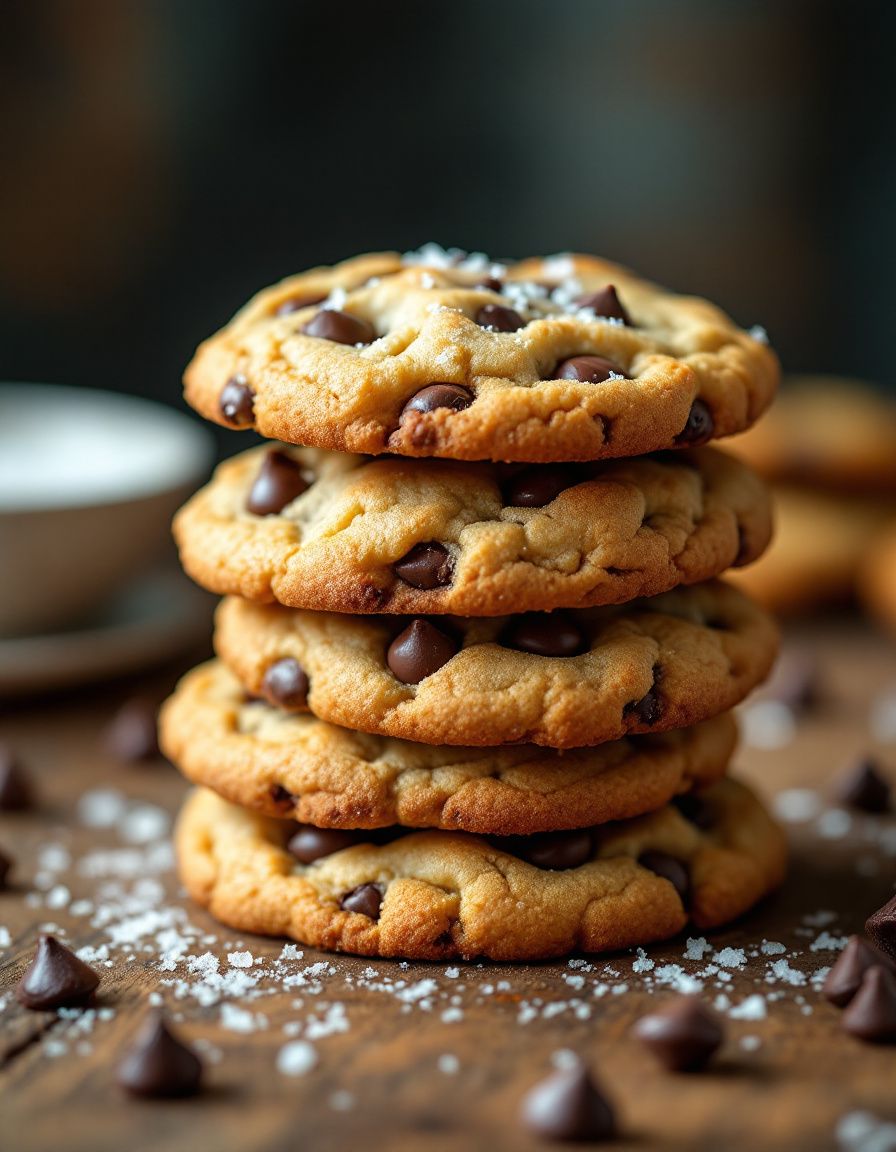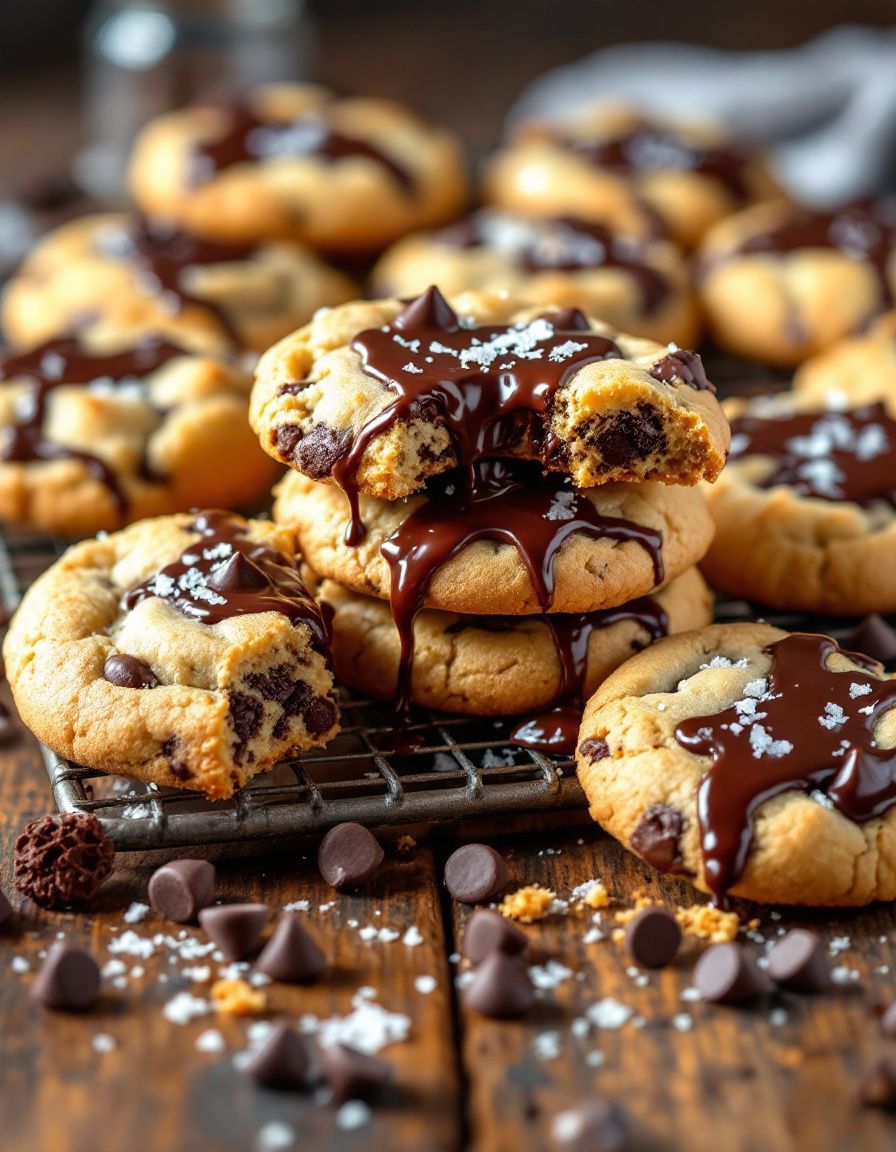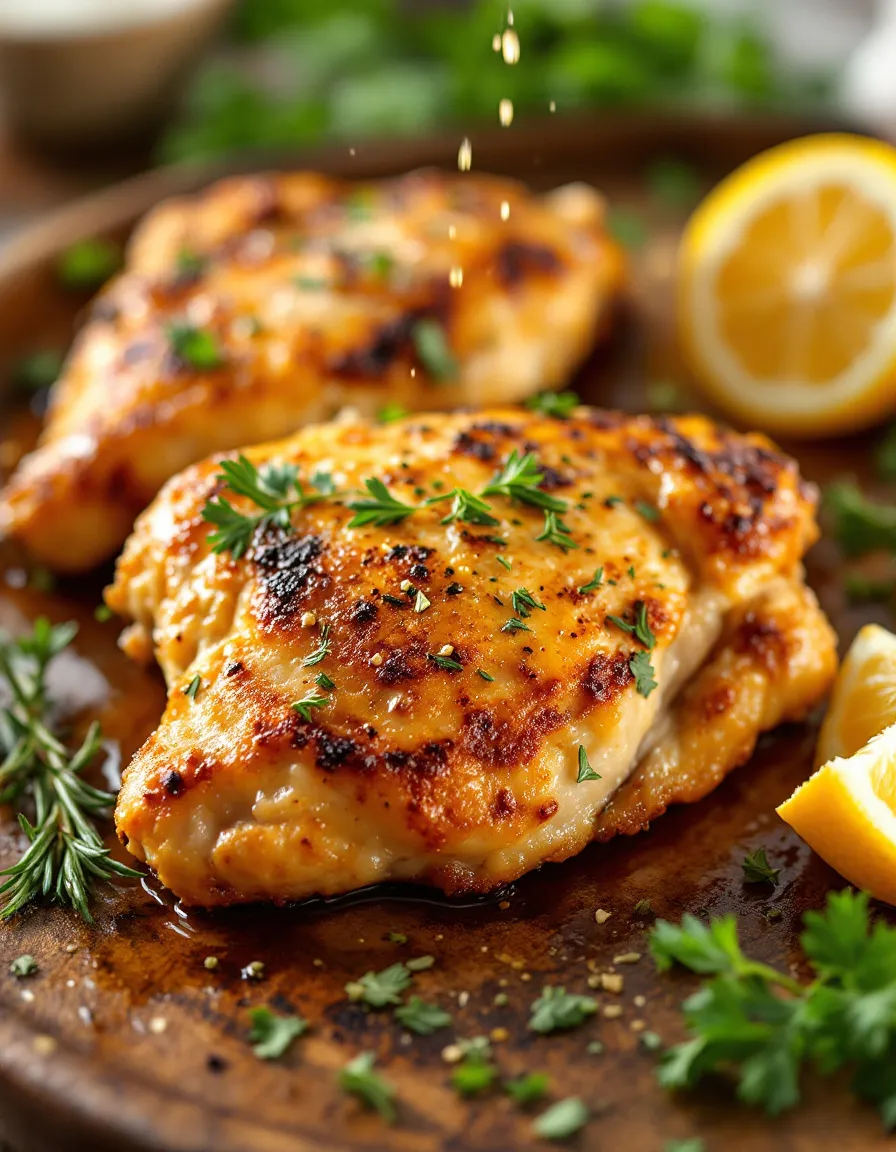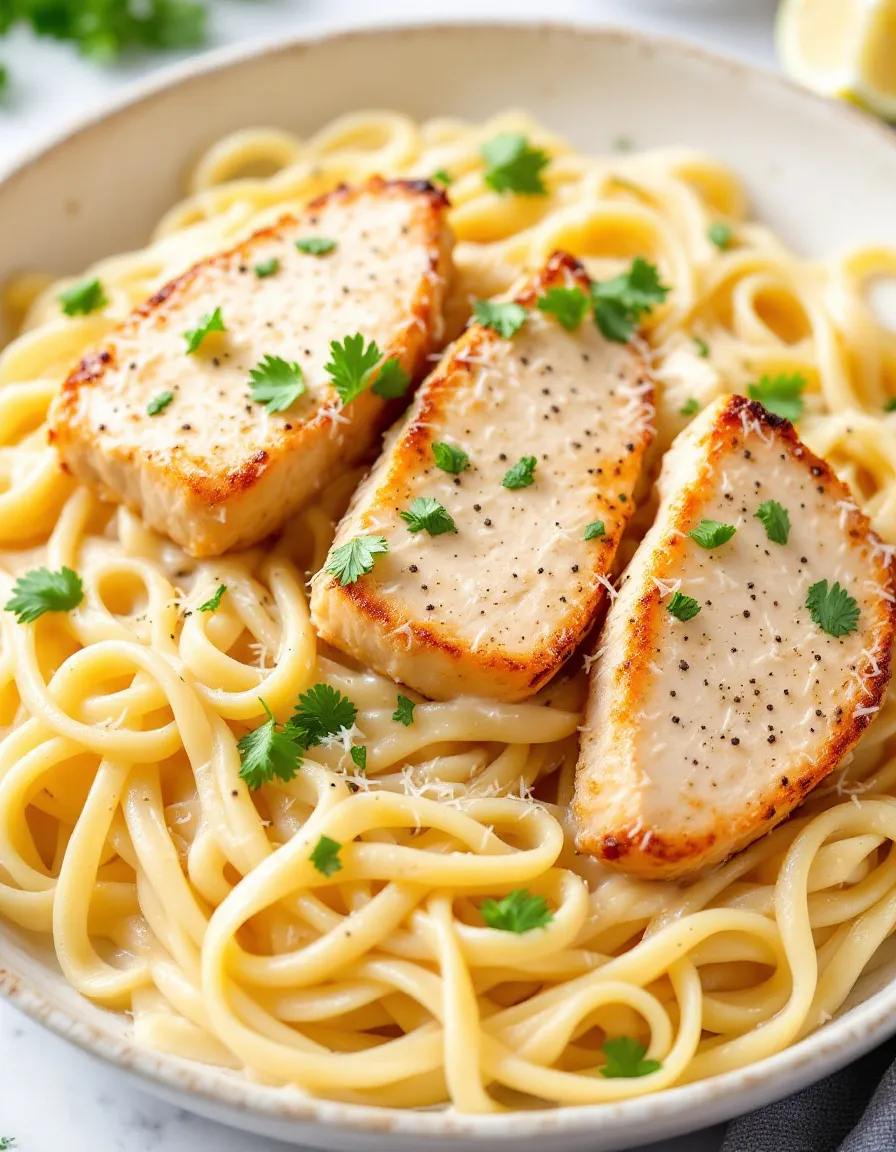Chocolate Chip Cookies: The Ultimate Comfort Treat
There’s something undeniably comforting about warm, gooey chocolate chip cookies fresh from the oven. This classic recipe for chocolate chip cookies pairs the sweetness of brown sugar with the slightly salty taste of butter, creating a rich and indulgent treat that is hard to resist. Each bite offers a harmonious blend of flavors and textures—chewy, crispy edges combined with soft, melted chocolate that creates an irresistible indulgence.
Whether you’re baking for a special occasion or simply treating yourself, these chocolate chip cookies are perfect for sharing with family and friends. The aroma that fills your kitchen while they bake will evoke memories of childhood, warmth, and joy. This delightful recipe guarantees that your cookies come out perfect every time, ensuring the ultimate comfort food experience that everyone will love.
Quick Recipe Highlights
- Flavor Profile: Rich, buttery flavor enhanced by sweet brown sugar and semi-sweet chocolate morsels.
- Texture: Soft and chewy centers with crispy edges, creating a delightful mouthfeel.
- Aroma: Enjoy the sweet, buttery scent as they bake, with hints of vanilla and chocolate.
- Visual Appeal: Golden-brown cookies dotted with melted chocolate chips are a visual delight.
- Skill Level Needed: Perfect for beginners; requires basic baking skills and a few common tools.
- Special Equipment: Standard kitchen tools such as mixing bowls, a whisk, measuring cups, and a baking sheet.
Recipe Overview
- Difficulty Level: This recipe is classified as easy, making it suitable for bakers of all levels. Basic measuring and mixing skills are all that are needed.
- Category: Chocolate chip cookies belong to the dessert category, making them ideal for a sweet treat any time of day.
- Cuisine: Originating from American baking traditions, these cookies are beloved by many and can be customized in multiple ways.
- Cost: The ingredients for these cookies are relatively inexpensive, typically totaling around $5, making them accessible for everyone.
- Season: Perfect for any season, but especially loved during holidays and family gatherings.
- Occasion: These cookies are great for celebrations, snack time, or when you’re simply craving something sweet.
Why You’ll Love This Recipe
This classic chocolate chip cookie recipe delights with its rich taste and wonderful texture. The combination of creamy butter, sugar, and chocolate creates a symphony of flavors that dance on your taste buds. From the first bite, the softness envelops you while the crispy edges add an enjoyable contrast. This beloved treat is always a crowd-pleaser, making it perfect for gatherings or a quiet night in.
Another reason to love this cookie recipe is its convenience. With a mere 15 minutes of prep and simple steps, you can enjoy fresh-baked treats without spending hours in the kitchen. The ingredients are straightforward, ensuring that you can whip up your batch with ease, making it a great choice for novice bakers.
Nutritionally, chocolate chip cookies can bring joy without the guilt if you enjoy them in moderation. They are energy-boosting treats that can brighten your day. For those with kitchen skills, they can even be modified to include healthier ingredients like oats or nuts for added nutrition.
Sharing cookies can create memorable moments with loved ones. Baking together brings families closer and makes for fantastic opportunities to engage socially, as everyone loves to share their favorite cookie stories. These bite-sized morsels are also perfect for gifting; wrapping a batch in a lovely box can brighten anyone’s day!
In terms of cost, this recipe is budget-friendly, allowing for delightful treats without straining your wallet. These cookies are simple enough for weeknight baking, yet delicious enough to serve at parties or special events, showing that sweet indulgence doesn’t always have to be expensive or time-consuming.
Historical Background and Cultural Significance
Chocolate chip cookies have an iconic status rooted in American culture. The original recipe was created by Ruth Wakefield in the late 1930s at the Toll House Inn in Massachusetts. Wakefield’s introduction of chocolate bits into her cookie dough paved the way for what soon became a national favorite, making Toll House cookies a beloved household name.
As the cookies gained popularity, they became a symbol of American baking and home cooking. Their rise in the 1940s and ’50s coincided with an era that emphasized homemade desserts as part of family traditions. Over time, chocolate chip cookies have become more than just a treat; they symbolize comfort, nostalgia, and simple pleasures.
With each passing decade, variations of the chocolate chip cookie have emerged regional and international adaptations that each put their unique spin on the classic recipe. From chunkier bites packed with nuts to decadently gooey versions stuffed with peanut butter cups, the chocolate chip cookie continues to evolve while retaining its core identity.
Today, the chocolate chip cookie is not just a guilty pleasure; it’s a cultural icon, celebrated in family kitchens, bakeries, and cookie shops worldwide. They have found their way into dishes like milkshakes and dessert pizzas, showcasing their immense versatility.
Ingredient Deep Dive
All-Purpose Flour: Flour is the backbone of most baked goods, providing structure and texture. Using all-purpose flour ensures a balanced cookie that isn’t too dense or too light. When selecting flour, look for a high-quality brand that guarantees freshness. Store your flour in an airtight container to prolong its shelf life, and consider measuring it using the spoon and level method for accuracy. If you need alternatives, whole wheat or almond flour can work, though they will alter the final taste and texture.
Butter: Butter adds flavor and moisture, making cookies rich and soft. The choice between unsalted and salted butter can influence the overall taste; unsalted is typically preferred for controlled seasoning. To achieve the perfect cookie, ensure your butter is at room temperature for easier creaming with sugar. For storage, keep it in the refrigerator to prevent spoilage, and substitutions like margarine or coconut oil can be used with adjustments to flavor.
Granulated Sugar: This sugar sweetens and creates chewiness. It enhances the cookie’s texture, giving it a slight crispiness. When selecting granulated sugar, any brand will suffice, but consider organic options for a cleaner taste. Store sugar in a cool, dry place, and keep an eye out for clumping. Brown sugar can be used in place of granulated sugar for a richer flavor and added moisture.
Chocolate Chips: The star ingredient, chocolate chips bring sweetness and indulgence to the cookie. Semi-sweet chocolate is traditional, but feel free to experiment with dark, milk, or white chocolate chips for varied flavors. When shopping for chocolate chips, look for high-quality brands; they make a noticeable difference. Store any leftover chips in a cool, dry space. If you desire a healthier option, consider dark chocolate chips which offer improved nutritional benefits.
Common Mistakes to Avoid
- Using cold butter: Ensure your butter is at room temperature to achieve the right texture by mixing it smoothly with the sugars.
- Overmixing dough: Mixing the dough too vigorously can lead to dense cookies; instead, mix just until combined.
- Incorrectly measuring flour: Use the spoon and level method to avoid tough cookies caused by excess flour.
- Skimping on chilling time: Chilling the dough can help develop flavors and prevent spread while baking.
- Underbaking cookies: Bake until the edges are golden brown to ensure the desired chewy texture throughout.
- Using expired ingredients: Always check your baking soda and flour for freshness before starting.
- Baking at the wrong temperature: Ensure your oven is properly calibrated to avoid burnt or undercooked cookies.
- Not letting cookies cool: Allow cookies to cool on the baking sheet briefly to set before transferring them to a wire rack.
Essential Techniques
Creaming Butter and Sugar: This key technique aerates the butter, leading to a light and fluffy cookie texture. Start with room temperature butter and sugar; beat them together until the mixture is pale and fluffy. Common pitfalls include using cold butter or not mixing long enough. Look for a light, creamy consistency before adding other ingredients.
Measuring Ingredients Accurately: Accurate measurements are vital for great baking results. Use a kitchen scale for precision, especially with flour. Spoon flour into your measuring cup and level it off rather than scooping directly from the container, as this can pack down the flour, leading to drier cookies. Consistency in measurement is key for achieving cookie perfection.
Pro Tips for Perfect Chocolate Chip Cookies
1. Always start with room temperature ingredients for better incorporation and texture.
2. Chilling the dough for at least 30 minutes helps develop flavors and prevents the cookies from spreading too much.
3. Experiment with different types of chocolate chips—mix semi-sweet with dark or white chocolate for a variety of flavor.
4. For a hint of saltiness, sprinkle a little sea salt on cookies right before baking.
5. Line your baking sheets with parchment paper to prevent sticking and ensure even baking.
6. Keep an eye on cooking times; remove cookies while they’re slightly underbaked for the best chew.
7. Adjust baking times for different oven types, especially for convection ovens which may require shorter baking times.
8. Store cookie dough in the refrigerator for up to three days before baking for future convenience.
Variations and Adaptations
Chocolate chip cookies can be versatile, adapting to various regional flavors and dietary preferences. For example, to make a classic brookie, use half cookie and half brownie batter baked together. Seasonal variations might include pairing these cookies with pumpkin spice in the fall or candy canes for a festive twist during Christmas. Opting for dietary modifications such as gluten-free flour or adding oats can cater to those with specific dietary needs without compromising the original’s deliciousness. You can also try adding different nuts or dried fruits for texture and flavor modifications, making the recipe uniquely yours.
Serving and Presentation Guide
When serving chocolate chip cookies, consider using an elegant platter to display them attractively. Garnishing with a sprig of mint or serving with a scoop of vanilla ice cream creates a delightful dessert experience. For traditional accompaniments, pair with a tall glass of cold milk or a cup of coffee. Maintain cookies in an airtight container to stay fresh, and consider showcasing variations creatively for gatherings. For temperature, serve warm from the oven or at room temperature, depending on personal preference.
Wine and Beverage Pairing
For pairing, a rich Cabernet Sauvignon complements the sweetness of chocolate chip cookies beautifully, while a light Chardonnay can enhance the buttery notes. Non-alcoholic options like cold brew coffee or classic milk are always favorites. For a cozy vibe, consider crafting a mocha latte for a delightful contrast. Always serve beverages chilled or at the right temperature to maximize the flavor connection between the drink and cookies.
Storage and Shelf Life
Store your chocolate chip cookies in an airtight container at room temperature for up to a week. For longer shelf life, you can freeze them; they can last up to three months. Ensure to cool cookies completely before freezing. Reheat cookies in the oven for a couple of minutes if you’d like to enjoy them warm again. Signs of spoilage include an off smell or stale texture, indicating that fresh treats are needed.
Make Ahead Strategies
One effective way to prepare in advance is to make the cookie dough and store it in the refrigerator for up to 3 days before baking. You can also pre-scoop portions onto a baking sheet and freeze them individually. After freezing, transfer them to a zip-lock bag to make baking fresh cookies quick and easy whenever cravings hit. Consider keeping chocolate chips or nuts separate when preparing the dough and adding right before baking to maintain texture during storage.
Scaling Instructions
This chocolate chip cookie recipe is easily scalable! To scale down the recipe, simply halve measurements; cookies will still bake uniformly. For larger batches, doubling or tripling the recipe may require baking in batches to ensure proper cooking. Be aware that bake times may vary slightly, so always check your cookies’ doneness, adjusting oven space or temperature if needed.
Nutritional Deep Dive
Examining the nutritional profile of chocolate chip cookies reveals they are high in carbohydrates, mainly from sugars and flour. Each cookie generally contains around 9 grams of fat, offering energy while providing some essential fatty acids if made with quality butter. Micronutrients such as iron and calcium can be found in small amounts. Balancing your cookie intake with adequate nutrition and portion control is important for a healthy lifestyle, allowing indulgence without concern for excess.
Dietary Adaptations
Baking adaptations can cater to various dietary preferences and restrictions. For gluten-free options, substitute all-purpose flour with gluten-free blends designed for baking. To make them vegan, replace butter with coconut oil or margarine and use flax eggs. For low-carb diets, consider almond flour and sugar substitutes. Each adaptation may affect taste and texture, so minor experimentation is necessary to perfect each variation while keeping the essence of the classic recipe.
Troubleshooting Guide
If your cookies turn out too dry, this often indicates too much flour; always measure your ingredients accurately. For overly flat cookies, refrigerating the dough before baking can help enhance structure. If you find the flavors lacking, simply adjusting the amount of vanilla or adding a pinch of salt can elevate the taste significantly. Equipment challenges such as uneven baking can be mitigated by rotating your cookie sheets halfway through the baking process.
Recipe Success Stories
This chocolate chip cookie recipe has received enthusiastic responses from the community! Many bakers have reported perfect results on their first try, adapting the recipe to suit their personal tastes. Readers loved experimenting with mix-ins like nuts and dried fruits, sharing photos of their baking adventures. Contributing ideas for ingredient substitutions further enriched the recipe, showing the versatility that can be achieved with this beloved classic.
Frequently Asked Questions
What kind of chocolate chips should I use?
For traditional chocolate chip cookies, semi-sweet chips provide the classic taste, but feel free to experiment with dark, milk, or even white chocolate for diverse flavors.
Can I freeze cookie dough?
Yes! Cookie dough freezes perfectly. Portion it out on a baking sheet and freeze. Once solid, transfer portions to a zip-lock bag for easy baking later.
What’s the best way to store cookies?
Store cookies in an airtight container at room temperature for up to a week. For longer storage, freeze them for up to three months.
Why do my cookies spread too much?
This may be caused by warm dough or insufficient chilling time. Always chill your dough for at least 30 minutes before baking for better texture.
Can I use whole wheat flour instead of all-purpose flour?
Yes, whole wheat flour can be used, but it may alter the texture slightly; consider using a mix of both for a healthier yet familiar taste.
How do I know when my cookies are done?
Look for edges that are lightly golden while the centers look underbaked; they’ll continue to cook on the baking sheet after you remove them from the oven.
Can I add nuts to my chocolate chip cookies?
Absolutely! Walnuts or pecans make excellent additions, adding texture and flavor. Just fold them in during the mixing process.
What happens if I overmix the dough?
Overmixing can lead to denser cookies. Mix only until the flour is incorporated to maintain a light texture.
Can I replace eggs in the recipe?
Yes, you can use flaxseed meal or applesauce as egg substitutes. Use one tablespoon of flaxseed meal mixed with three tablespoons of water per egg.
What if my cookies are too chewy?
Too much moisture or butter can lead to chewier cookies. Adjust the amounts slightly and check your measurements for accuracy.
Additional Resources
Explore our related recipes for a variety of baking treats, from classic snickerdoodles to rich brownies. For those looking to dive deeper into baking techniques, check our guides on perfecting the creaming method or mastering ingredient substitutions. Interested in ingredient information? Find tips on selecting high-quality chocolate and flour. Plus, discover seasonal variations that offer exciting twists on your classic cookie recipes.
Join the Conversation
We invite you to share your baking experiences! Engage with us on social media by showcasing your delicious chocolate chip cookies. Share your variations or unique presentations, and connect with fellow cookie enthusiasts by exchanging photographs. Your feedback and suggestions not only enrich our baking community but inspire others to join the delicious journey of baking homemade cookies!
The Recipe
Chocolate Chip Cookies
Serves: 24 cookies
Prep Time: 15 mins
Cook Time: 10 mins
Total Time: 25 mins
Kitchen Equipment Needed
- Baking sheets
- Parchment paper
- Mixing bowls
- Whisk or electric mixer
- Measuring cups and spoons
- Spatula
Ingredients
- 2 1/4 cups all-purpose flour
- 1/2 teaspoon baking soda
- 1 cup unsalted butter, softened
- 3/4 cup granulated sugar
- 3/4 cup packed brown sugar
- 1 teaspoon salt
- 2 teaspoons pure vanilla extract
- 2 large eggs
- 2 cups semi-sweet chocolate chips
Directions
- Preheat your oven to 350°F (175°C) and line baking sheets with parchment paper.
- In a mixing bowl, whisk together flour and baking soda. Set aside.
- In a large bowl, cream together butter, granulated sugar, brown sugar, and salt until smooth.
- Add vanilla extract and eggs, beating until well combined.
- Gradually mix in the flour mixture until just combined, then fold in chocolate chips.
- Drop tablespoon-sized dough onto prepared baking sheets, spacing them about 2 inches apart.
- Bake for 10-12 minutes or until edges are golden brown.
- Remove from oven and allow cookies to cool on a baking sheet for 5 minutes before transferring to a wire rack to cool completely.
Recipe Notes
- For softer cookies, remove from the oven when they appear slightly underbaked.
- Chill cookie dough for 30 minutes for thicker cookies.
- Store leftover cookies in an airtight container at room temperature.



